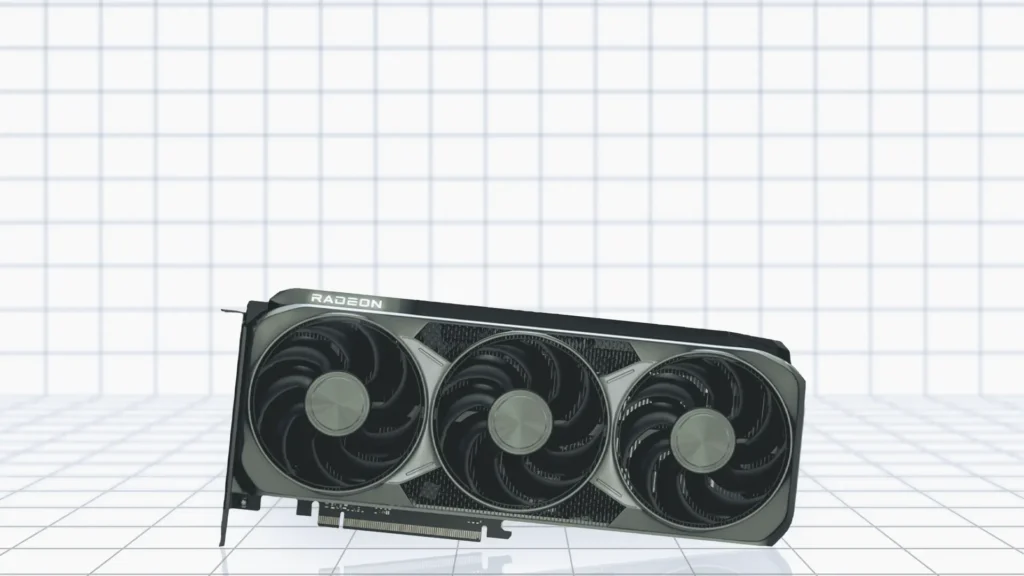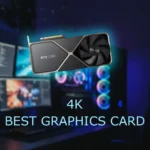In 2025, 1440p resolution stands as a highly favored choice for PC gamers, striking an appealing balance between the visual richness offered by higher resolutions and the smooth, high refresh rates crucial for an immersive gaming experience. This resolution, also known as Quad HD (QHD), provides a significant step up in clarity and detail compared to 1080p without demanding the extreme processing power required for consistent high frame rates at 4K. As technology advances, the landscape of graphics cards capable of delivering excellent performance at 1440p continues to evolve. This report offers a comprehensive guide to selecting the best graphics card for 1440p gaming in 2025 from the following prominent contenders: AMD RX 9070 XT, AMD Radeon RX 7900 GRE, RTX 4070 Super, GeForce RTX 5070, RTX 3060 Ti, AMD Radeon RX 6800, and Intel Arc A770. When making this critical decision, gamers typically weigh several key factors, including the card’s raw performance in various games, its support for advanced features like ray tracing and upscaling technologies, its price point, and its power efficiency and cooling requirements. This analysis will delve into each of these aspects for the specified graphics cards to provide an expert perspective on the optimal choice for your 1440p gaming setup in 2025.
Best Graphics Card for 1440p
AMD Radeon RX 9070 XT – Best 1440p AMD card that can run 4K with ease.
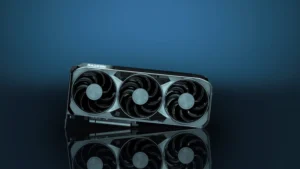
Specifications
Shaders: 4096 | Boost Clock: 2970MHz| VRAM: 16GB GDDR6 | Memory Bandwidth: 644.6 GB/s | Power Connectors: 2×8-pin| AVG FPS (1440p): 170
The AMD RX 9070 XT represents a high-performance offering from AMD in 2025, built upon the new RDNA 4 architecture. This architecture brings enhancements in processing power and efficiency, positioning the RX 9070 XT as a strong contender for demanding gaming scenarios. The card is equipped with 16GB of GDDR6 memory, a substantial amount that suggests its capability to handle high-resolution textures and complex game worlds at 1440p and potentially beyond. With a Thermal Design Power (TDP) of 304W, it indicates a need for a robust power supply, with recommendations suggesting at least a 750W unit for the entire system. This power draw also implies that effective cooling solutions will be crucial for maintaining optimal performance and preventing thermal throttling. Partner card manufacturers such as XFX, Sapphire, ASUS, and Gigabyte will likely incorporate advanced cooling designs, often featuring multiple fans and large heatsinks, to manage the heat output, as AMD does not produce reference designs for this series.
Performance Comparison
Performance benchmarks for the AMD RX 9070 XT at 1440p resolution demonstrate its strong capabilities. In 1440p performance across 16 games with V.High Graphics, the card achieves an impressive average of 170 frames per second (FPS). When ray tracing is enabled, the average frame rate remains high at 80.9 FPS, indicating its proficiency in handling visually demanding games with advanced lighting effects. Comparisons with the previous generation AMD Radeon RX 7900 GRE show the RX 9070 XT delivering anywhere from a 23% to 44% performance increase at 1440p Ultra settings, highlighting the generational improvements offered by the RDNA 4 architecture. In specific titles like Ghost of Tsushima, the RX 9070 XT reaches 121 FPS, 112 FPS in Cyberpunk 2077 and 125 FPS in Horizon Forbidden West on Average at ultra graphics, proving its ability to handle the latest demanding releases.
In summary, the AMD RX 9070 XT presents a compelling option for 1440p gaming in 2025. Giving extremely low temps Its high performance in both rasterization and ray tracing, coupled with the benefits of 16GB VRAM and FSR 4 upscaling, make it suitable for a wide range of games and visual settings. The primary considerations for potential buyers are its higher power consumption, which necessitates a capable power supply and good system cooling, and its potential price, which, while having an MSRP of $599, might vary based on market demand and availability.
AMD Radeon RX 7900 GRE – Best 1440p GPU for 120Hz smooth gaming

Shaders: 5120 | Boost Clock: 2245 MHz| VRAM: 16GB GDDR6 | Memory Bandwidth: 576 GB/s | Power Connectors: 2×8-pin| AVG FPS (1440p): 138FPS
The AMD Radeon RX 7900 GRE, based on the RDNA 3 architecture, remains a strong contender for 1440p gamers, particularly known for its excellent rasterization performance and a generous 16GB of GDDR6 memory. Originally released internationally in February 2024, this card occupies a space between the RX 7900 XT and RX 7800 XT in AMD’s lineup. Its TDP of 260W suggests a good balance between performance and power efficiency, although some manufacturers recommend a power supply of 800W or greater, potentially to account for system configurations and power headroom. Similar to the RX 9070 series, the RX 7900 GRE is primarily available through partner card manufacturers, each offering their own cooling solutions to ensure stable performance.
Performance Comparison
At 1440p resolution, the RX 7900 GRE demonstrates impressive gaming capabilities. Benchmarks indicate an average frame rate of 138 FPS in general tests, making it best-in-class performance for the midrange category. In specific titles shows even higher averages, such as 95 FPS in Ghost of Tsushima and 82 FPS in Cyberpunk 2077, and 73 FPS in Horizon Forbidden West at Max Graphics. the latter being comparable to the performance of an RTX 3080 Ti or RTX 4070 Super. At 1440p, the RX 7900 GRE performs approximately 2% ahead of the RTX 4070 Super and the same as RTX 3080 Ti. The Best thing we noticed in the RX 7900 GRE, there was not much frame drop as compared to Nvidia cards, which makes it the best option for Fortnite or Warzone competitive 1440p players.
In conclusion, the AMD Radeon RX 7900 GRE offers excellent value for 1440p gaming in 2025, particularly for gamers who prioritize high frame rates in the latest released games and appreciate the benefit of a large 16GB VRAM capacity. While its ray tracing capabilities are not as strong as some of its NVIDIA counterparts, its robust performance and competitive price point make it a compelling choice in the mid-range GPU market.
Nvidia GeForce RTX 4070 Super – Best 1440p for 120Hz high graphics
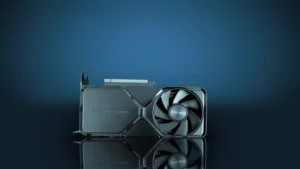
Cores: 7168| Boost Clock: 2475 MHz| VRAM: 12GB GDDR6X | Memory Bandwidth: 504.2 GB/s | Power Connectors: 1×16-pin| AVG FPS (1440p): 130FPS
The NVIDIA RTX 4070 Super, based on the efficient Ada Lovelace architecture, came out as a well-balanced and highly capable graphics card for 1440p gaming. As a refresh of the original RTX 4070, the Super variant offers a significant increase in core count, leading to enhanced performance across various gaming scenarios. It comes equipped with 12GB of GDDR6X memory and has a TDP of 220W, indicating a good balance between power and performance.
Performance Comparison
Performance benchmarks at 1440p resolution highlight the RTX 4070 Super’s strength. 1440p testing shows an average of 130 FPS across a range of games at this resolution. Detailed benchmarks at 1440p Max graphics reveal even higher frame rates in specific titles, such as 132 FPS in Forza Horizon 5, 220 in Apex Legends and 155 FPS in GTA V. In Cyberpunk 2077 at 1440p, it achieves a solid 73 FPS on average. These figures tell the card’s ability to handle demanding games at max settings with smooth frame rates. The RTX 4070 Super also excels in ray tracing performance, thanks to NVIDIA’s advanced RT Cores and DLSS 3 technology. The card beats the AMD RX 6900XT with 5% and the RTX 3080 by 8% better 1440p performance.
In conclusion, the NVIDIA RTX 4070 Super stands out as one of the best overall GPUs for 1440p gaming. Its strong performance, excellent ray tracing capabilities with DLSS 3, and efficient power consumption make it a compelling option for gamers seeking a premium experience at this resolution. Good pricing for graphics cards is a big problem these days, but if you get a chance to grab a new RTX 4070 Super under 600$, I think it’s a great deal. Even with the release of the Nvidia RTX 5070, it’s hard to find a good RTX 4070 Super variant under that price.
Nvidia GeForce RTX 5070 – Best 1440p GPU for RayTracing
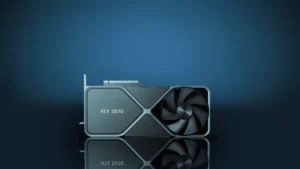
Specifications
Cores: 6144| Boost Clock: 2512 MHz| VRAM: 12GB GDDR7 | Memory Bandwidth: 672GB/s | Power Connectors: 1×16-pin| AVG FPS (1440p): 140FPS
The GeForce RTX 5070, based on NVIDIA’s latest Blackwell architecture, is a highly anticipated graphics card for 2025. It comes equipped with 12GB of faster GDDR7 memory and has a TDP of 250W, slightly higher than its predecessor, the RTX 4070 Super. NVIDIA has emphasized the card’s potential when paired with DLSS 4, which includes Multi Frame Generation (MFG), claiming it can even reach RTX 4090-level performance in some scenarios. The recommended power supply for a system with an RTX 5070 is around 650W. Both NVIDIA Founders Edition and partner card models are available, featuring great cooling solutions to manage the increased power draw. At 1440p resolution, the RTX 5070’s performance is often comparable to 4070 Ti or better than the RTX 4070 Super.
Gaming with DLSS 4 and Multi Frame Gen
However, its key advantage lies in its support for DLSS 4 with MFG. This new technology uses AI to generate additional frames, potentially leading to significantly higher frame rates in supported games. The RTX 5070 achieves 140 FPS on average. While raw ray tracing performance might not show a dramatic improvement over the RTX 4070 Super, but was ahead of the RTX 4070 Super. However, it’s important to note that MFG is not universally supported and can cause shadowing & stuttering in some games.
The RTX 5070 retains 12GB of VRAM, which, while sufficient for most 1440p gaming needs in 2025, might be a point of consideration for users looking for more future-proofing or planning to venture into higher resolutions. The card’s MSRP is $549, slightly less than the launch price of the RTX 4070 Super.
In conclusion, the GeForce RTX 5070 holds a very good position for 1440p and 4K gaming as well, due to its access to DLSS 4 with Multi Frame Generation. The Multi Frame Gen is not much liked by the users, but still it’s a great feature for high refresh rate lovers. But personally I prefer playing without MFG for better visuals. While the performance improvement isn’t as significant as with the RTX 3070 and 4070, the $550 price point still makes it the best option.
Nvidia Geforce RTX 3060 Ti – Best Affordable Nvidia GPU

Specifications
Cores: 4864| Boost Clock: 1665 MHz| VRAM: 8GB GDDR6 | Memory Bandwidth: 448GB/s | Power Connectors: 1×8-pin| AVG FPS (1440p): 84FPS
The NVIDIA RTX 3060 Ti, based on the Ampere architecture, remains a capable graphics card for 1440p gaming in 2025, particularly for budget-conscious gamers or those considering the used market. While it is an older generation card, it still offers a solid level of performance in many modern titles. The RTX 3060 Ti features 8GB of GDDR6 memory and has a TDP of around 200W. The recommended power supply for a system with this card is typically around 550-600W. Various cooling solutions are available from different manufacturers, ensuring the card remains cool under load.
At 1440p resolution, the RTX 3060 Ti can deliver playable frame rates in most games, often averaging around 92 FPS on high settings and 84 on Max in 16 Tested Games. However, in the most demanding or newer titles, achieving consistently high frame rates at maximum settings might require some adjustments to graphical settings or the use of DLSS. For a 5-year-old budget GPU, it still performs surprisingly well as a budget card. While its ray tracing capabilities are not as advanced as the newer RTX 40 and 50 series cards, the RTX 3060 Ti still offers a decent entry point into ray-traced gaming at 1440p, especially when paired with DLSS to mitigate the performance impact.
However, for many gamers at 1440p, it remains sufficient for a good gaming experience. At 1440p High DLSS Q, achieved 87 fps in Alan Wake 2, 57 in Avatar Frontiers of Pandora, and 75 fps in Horizon Forbidden West with V.High DLSS Q. The RTX 3060 Ti had an initial MSRP of $399, and its price on the used market in 2025 might be even more attractive for budget-conscious buyers.
In conclusion, the RTX 3060 Ti offers a solid and affordable option for 1440p gaming. While it might not deliver the highest frame rates in the most 2024-2025 games, but is possible with DLSS support.
AMD Radeon RX 6800 – Best 1440p GPU for 90+ Hz gaming
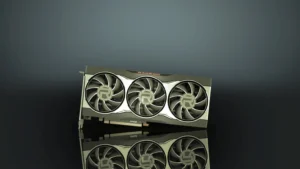
Specifications:
Shaders: 3840 | Boost Clock: 2105 MHz| VRAM: 16GB GDDR6 | Memory Bandwidth: 512 GB/s | Power Connectors: 2×8-pin| AVG FPS (1440p): 104FPS
The AMD Radeon RX 6800, based on the RDNA 2 architecture, continues to be a strong performer for 1440p gaming in 2025, particularly appealing due to its large 16GB GDDR6 memory capacity. This card offers performance comparable to the NVIDIA RTX 3070 and RTX 3080 in many scenarios. It has a TDP of around 250W and typically requires a 600-700W power supply. Partner card manufacturers provide various cooling solutions for the RX 6800, ensuring efficient heat dissipation.
Performance
At 1440p resolution, the RX 6800 delivers excellent gaming performance. Benchmarks show it often achieves frame rates above 60 FPS on high to ultra settings in a wide range of modern games. Its 16GB VRAM allows it to handle games with demanding texture settings without significant performance drops, making it a good choice for visually rich titles. The RX 6800 also supports AMD’s FidelityFX Super Resolution (FSR) 2 upscaling technology, which can help boost frame rates, especially when ray tracing is enabled. While its ray tracing performance is a notable improvement over previous AMD generations, it generally still lags behind NVIDIA’s newer RTX cards in heavily ray-traced games. However, for many gamers, the balance of strong rasterization performance and the large VRAM capacity make the RX 6800 a compelling option, particularly if found at an attractive price point in 2025. Its initial MSRP was around $579, and its value on the used market could be particularly appealing.
In conclusion, the AMD Radeon RX 6800 remains a powerful and well-suited graphics card for 1440p gaming in 2025. Its robust performance, substantial 16GB VRAM, and support for FSR 2 make it a strong contender, especially for gamers who prioritize rasterization performance and memory capacity over top-tier ray tracing capabilities.
Intel Arc A770 – Best Budget for 1440p 60 FPS
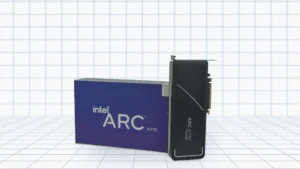
Specifications:
Shaders: 4096| Boost Clock: 2400 MHz| VRAM: 16GB GDDR6 | Memory Bandwidth: 512 GB/s | Power Connectors: 1x 6-pin + 1x 8-pin| AVG FPS (1440p): 71FPS
The Intel Arc A770 represents Intel’s entry into the high-performance discrete graphics card market and is a viable option for 1440p gaming in 2025, especially for budget-conscious gamers. It features 16GB of GDDR6 memory and has a TDP of around 225W. The recommended power supply for a system with the Arc A770 is typically around 550-650W. Intel’s own dual-fan design, as well as partner card solutions, provide adequate cooling for the card.
At 1440p resolution, the Intel Arc A770 can deliver a decent gaming experience in many modern titles, often achieving average frame rates in the 40-60 FPS range. However, performance can vary significantly depending on the specific game, with some titles running very well while others might require lower settings or the use of Intel’s Xe Super Sampling (XeSS) upscaling technology to reach smoother frame rates. The Arc A770 supports ray tracing, and its performance in this area is generally comparable to the NVIDIA RTX 3060 Ti. XeSS, Intel’s AI-enhanced upscaling, can provide a noticeable boost in performance with minimal visual impact in supported games, making ray tracing more viable at 1440p. The card’s 16GB VRAM is a strong asset, allowing it to handle high-resolution textures effectively. The Intel Arc A770 has an MSRP of around $329, positioning it as an attractive budget option for 1440p gaming.
In conclusion, the Intel Arc A770 offers a compelling value proposition for 1440p gaming in 2025, providing a good balance of performance and features at a competitive price. While its performance can be inconsistent across different games and its ray tracing capabilities are not top-tier, the combination of 16GB VRAM, XeSS support, and an affordable price makes it a worthwhile consideration for gamers on a budget or those looking for an alternative to the established GPU manufacturers.
Comparative Analysis: Choosing the Best Card for Your Needs
To help navigate the selection process, the seven graphics cards can be categorized into performance tiers based on their capabilities for 1440p gaming in 2025.
- High-End: AMD RX 9070 XT, GeForce RTX 5070
- Mid-Range: RTX 4070 Super, AMD Radeon RX 7900 GRE, AMD Radeon RX 6800
- Entry-Level 1440p: RTX 3060 Ti, Intel Arc A770
For gamers prioritizing the highest frame rates, especially in competitive titles, the GeForce RTX 5070 (when leveraging DLSS 4 MFG) and the AMD RX 9070 XT are excellent choices, potentially pushing well above 100 FPS in many scenarios. The RTX 4070 Super also offers very high frame rates, particularly with DLSS 3.
If visual fidelity with ray tracing is paramount, the RTX 4070 Super and GeForce RTX 5070 stand out due to NVIDIA’s stronger ray tracing hardware and the effectiveness of DLSS for maintaining performance. The AMD RX 9070 XT, with its improved ray tracing and FSR 4, is also a strong contender in this category.
For budget-conscious gamers, the RTX 3060 Ti, AMD Radeon RX 6800, and Intel Arc A770 offer more affordable pathways to 1440p gaming. These cards require some trade-offs in terms of maximum settings or frame rates in the most demanding games but still provide a very enjoyable experience at this resolution. The Intel Arc A770, with its aggressive pricing and 16GB VRAM, is particularly noteworthy for its value.
Considering future-proofing, graphics cards with 16GB of VRAM, such as the AMD RX 9070 XT, AMD Radeon RX 7900 GRE, AMD Radeon RX 6800, and Intel Arc A770, might be better equipped to handle increasingly demanding games and higher texture settings in the coming years. Additionally, newer architectures like RDNA 4 (AMD RX 9070 XT) and Blackwell (GeForce RTX 5070) often bring other underlying performance and efficiency improvements that can contribute to longevity.
Frequently Asked Questions (FAQs)
Q: Will my CPU bottleneck these graphics cards at 1440p?
A: At 1440p, the likelihood of a significant CPU bottleneck is lower than at 1080p, as the GPU becomes more of the limiting factor. However, with the highest-end cards like the RX 9070 XT and RTX 5070, pairing them with an older or lower-end CPU might still result in some performance limitations, especially in CPU-intensive games. For optimal performance with these top-tier GPUs, a modern mid-to-high-end CPU is recommended. For the mid-range and entry-level cards, a broader range of CPUs will be well-suited for 1440p gaming.
Q: How important is VRAM for 1440p gaming in 2025?
A: VRAM (Video RAM) plays a crucial role in storing textures and other game assets. For 1440p gaming in 2025, at least 8GB of VRAM is generally recommended for a smooth experience in most titles. However, 12GB or 16GB can provide more headroom, especially for games with high texture settings, ray tracing enabled, or for future, more demanding releases. While 8GB cards like the RTX 3060 Ti are still capable, 12GB and 16GB options offer more future-proofing and the ability to maximize visual settings in a wider range of games.
Q: Should I prioritize ray tracing or higher frame rates?
A: The decision to prioritize ray tracing or higher frame rates often comes down to personal preference and the type of games you play. Ray tracing enhances visual realism through more accurate lighting and reflections, but it can be performance-intensive. If you value visual fidelity and play single-player, graphically rich games, ray tracing might be a priority. If you prefer smoother, more responsive gameplay, especially in competitive multiplayer games, higher frame rates might be more important. Many modern graphics cards and upscaling technologies allow you to strike a balance between the two.
Q: What power supply wattage do I need for each of these cards?
A: Recommended power supply wattages vary depending on the graphics card and the overall system configuration. Generally, for the specified cards:
- AMD RX 9070 XT: 750W or higher
- AMD Radeon RX 7900 GRE: 700-800W
- RTX 4070 Super: 550W
- GeForce RTX 5070: 650W
- RTX 3060 Ti: 550-600W
- AMD Radeon RX 6800: 600-700W
- Intel Arc A770: 550-650W
It’s always advisable to have some headroom above the minimum recommendation to ensure stable performance and account for potential power spikes.
Q: Are the newer architectures (RDNA 4, Blackwell) significantly better for 1440p gaming?
A: Yes, newer architectures like RDNA 4 (AMD RX 9070 XT) and Blackwell (GeForce RTX 5070) typically bring improvements in both performance and efficiency compared to their predecessors. These advancements can translate to higher frame rates, better handling of demanding features like ray tracing, and potentially lower power consumption for the same level of performance. While older architectures like Ampere (RTX 3060 Ti) and RDNA 2 (RX 6800) are still capable, the latest architectures generally offer a more future-proof and enhanced gaming experience at 1440p.
Q: How does DLSS compare to FSR and XeSS for 1440p upscaling?
A: DLSS (Deep Learning Super Sampling) from NVIDIA, FSR (FidelityFX Super Resolution) from AMD, and XeSS (Xe Super Sampling) from Intel are all technologies designed to upscale lower-resolution images to a higher resolution, improving performance with minimal loss in visual quality. DLSS often has an edge in image quality in some scenarios due to its use of temporal data and AI-trained models, but it requires NVIDIA RTX series GPUs. FSR is open-source and works on a wider range of GPUs, and its latest versions (FSR 3 and 4) have significantly improved image quality. XeSS also utilizes temporal data and AI-like algorithms (though not strictly deep learning in all implementations) and offers a good balance of performance and image quality on Intel Arc GPUs and is also compatible with other vendors’ cards. At 1440p, all three technologies can be effective in boosting frame rates and can make demanding features like ray tracing more playable.
Q: What are the typical street prices of these cards in 2025?
A: Predicting exact street prices in 2025 is challenging due to market fluctuations and availability. However, based on historical trends and launch MSRPs, we can expect the high-end cards (RX 9070 XT, RTX 5070) to be priced around $550-$700, the mid-range cards (RTX 4070 Super, RX 7900 GRE, RX 6800) in the $500-$650 range, and the entry-level options (RTX 3060 Ti, Arc A770) to be available for under $450, potentially even lower on the used market. Actual prices will depend on supply, demand, and any ongoing market conditions.
Conclusion
Choosing the best graphics card for 1440p gaming in 2025 from this list requires careful consideration of your individual needs, budget, and gaming preferences. The AMD RX 9070 XT and GeForce RTX 5070 represent the high-end options, offering top-tier performance and advanced features, with the RTX 5070 particularly shining with its DLSS 4 capabilities. The RTX 4070 Super and AMD Radeon RX 7900 GRE provide excellent mid-range performance, balancing power and price, with the RX 7900 GRE boasting a larger VRAM capacity and strong rasterization. The AMD Radeon RX 6800 remains a solid performer with ample VRAM, especially appealing on the used market. Finally, the RTX 3060 Ti and Intel Arc A770 serve as capable entry-level options for 1440p gaming, offering good value for their price, with the Arc A770 standing out for its 16GB VRAM at a very competitive price point.
Ultimately, the ideal choice will depend on whether you prioritize the absolute highest frame rates, the best ray tracing visual fidelity, the largest VRAM capacity for future-proofing, or the most budget-friendly option. By carefully weighing the strengths and weaknesses of each card in relation to your specific gaming requirements, you can make an informed decision and ensure a fantastic 1440p gaming experience in 2025.
